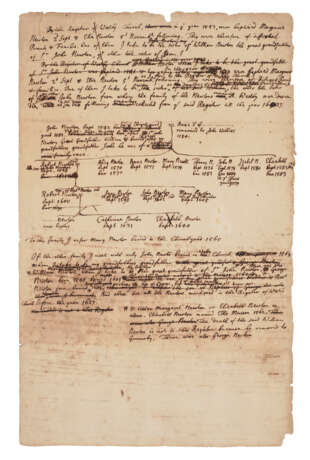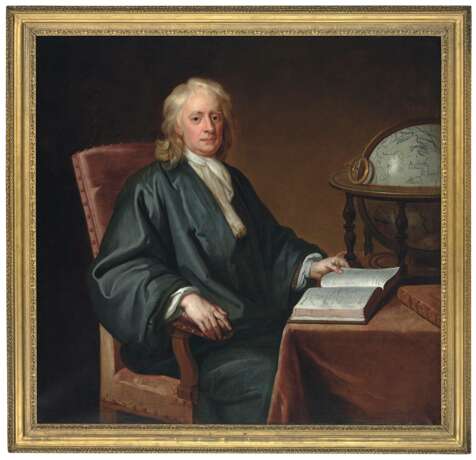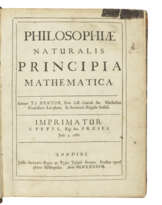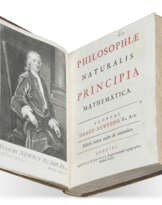ID 794517
Lot 51 | NEWTON, Isaac (1642-1727)
Valeur estimée
£ 60 000 – 90 000
Autograph manuscript, draft section of his 'affidavit for knighthood' and genealogical notes on the Newtons of Westby, n.p., n.d. [1705].
In English. Two pages, 310 x 195mm, densely written with frequent cancellations, emendations and redraftings, approx. 1,100 words in total, the two pages in inverse orientation.
Research into his ancestry, including childhood memories of his grandmother at Woolsthorpe Manor. The main text comprises three drafts for a section of Newton's 'affidavit for knighthood' submitted to the College of Heralds in 1705, recording Newton's childhood memories of conversations between his grandmother and her friends at Woolsthorpe regarding his relationship to 'Mr Newton of Hather aftewards S[i]r John Newton' (i.e. Sir John Newton, 2nd Baronet, of Culverthorpe near Heydour, Lincolnshire): Newton refers to himself in the third person, as 'he' and 'the Deponent'.
'he having by tradition from his kindred ever since he can remember recconed himself next of kin among the Newtons to Sr John Newtons family of Hather. & having also about 54 or 55 years ago heard his Grandmother Ascough (wth whom he lived at Wylstrope aforesaid alias Woolstrope till he was about eleven years old ... ) say that he this Deponent was or had been next heir at law to Mr Newton of Hather untill the birth of Mr Newton's children who were then two or three infants & that he & they were cousins two or three times removed or words to that purpose, & he this Deponent beleiving that his said Grandmother upon the marriage of her daughter wth his father might certainly inform her self of the kindred & that his Grandfather Newton to promote the marriage would be forward to speak of it, representing himself cousin once removed & next heir to the said Mr Newton at that time six or seven years under age afterwards father to Sr John Newton...'.
On the verso are notes and a family tree derived from the register of Westby Church (about five miles from Woolsthorpe) and relating to the Newtons of that parish, including baptismal and burial dates between 1543 and 1640: Newton attempts to disentangle their relationships to each other and to himself, notably 'John Newto[n] buried in Westby Church 1563 whom I take to be my grandfathers grandfather'.
When he was knighted in 1705 Newton was required to submit an affidavit to the College of Heralds to demonstrate that he was a gentleman: the present draft for the affidavit differs significantly from the final text, including in the detail of his memory of his grandmother's conversations; the genealogical notes form part of his research for the same submission, which Newton evidently prepared with his characteristic mania for detail. There were a number of branches of the Newton family in the vicinity of Woolsthorpe, of whom the grandest was his second cousin, John Newton (1626-1699), who was MP for Grantham from 1660 and baronet from 1662. Newton's memory of his grandmother's conversations 'about 54 or 55 years ago' and the reference to Sir John Newton's 'two or three infants' correspond to the years 1650 or 1651, when he was 7 or 8 years old. Newton's father had died before his birth, and when he was three years old his mother married again and left him to be reared by his grandparents, James and Margery Ayscough, until her return in 1653 after her second husband's death.
This is a rare and significant form of Newton’s autograph, demonstrating the same logical and meticulous mindset applied to genealogy that Newton exhibited in his scientific work. Newton has written out his surname ('Newton') in the document upwards of 50 times.
Special Notice
This lot has been imported from outside of the UK for sale and placed under the Temporary Admission regime. Import VAT is payable at 5% on the hammer price. VAT at 20% will be added to the buyer’s premium but will not be shown separately on our invoice.
| Artiste: | Isaac Newton (1643 - 1727) |
|---|---|
| Lieu d'origine: | Europe du Nord, Europe, Royaume-Uni |
| Catégorie maison de vente aux enchères: | Lettres, documents et manuscrits, Médecine et sciences |
| Artiste: | Isaac Newton (1643 - 1727) |
|---|---|
| Lieu d'origine: | Europe du Nord, Europe, Royaume-Uni |
| Catégorie maison de vente aux enchères: | Lettres, documents et manuscrits, Médecine et sciences |
| Adresse de l'enchère |
CHRISTIE'S 8 King Street, St. James's SW1Y 6QT London Royaume-Uni | |
|---|---|---|
| Aperçu |
| |
| Téléphone | +44 (0)20 7839 9060 | |
| Commission | see on Website | |
| Conditions d'utilisation | Conditions d'utilisation |




![[NEWTON, Isaac (1642-1727)]](/assets/image/picture_4036009/5c8e6/3e601c7a9444e346ef4136ceaf96156f1720562400jpg__fix_162_205.jpeg)








